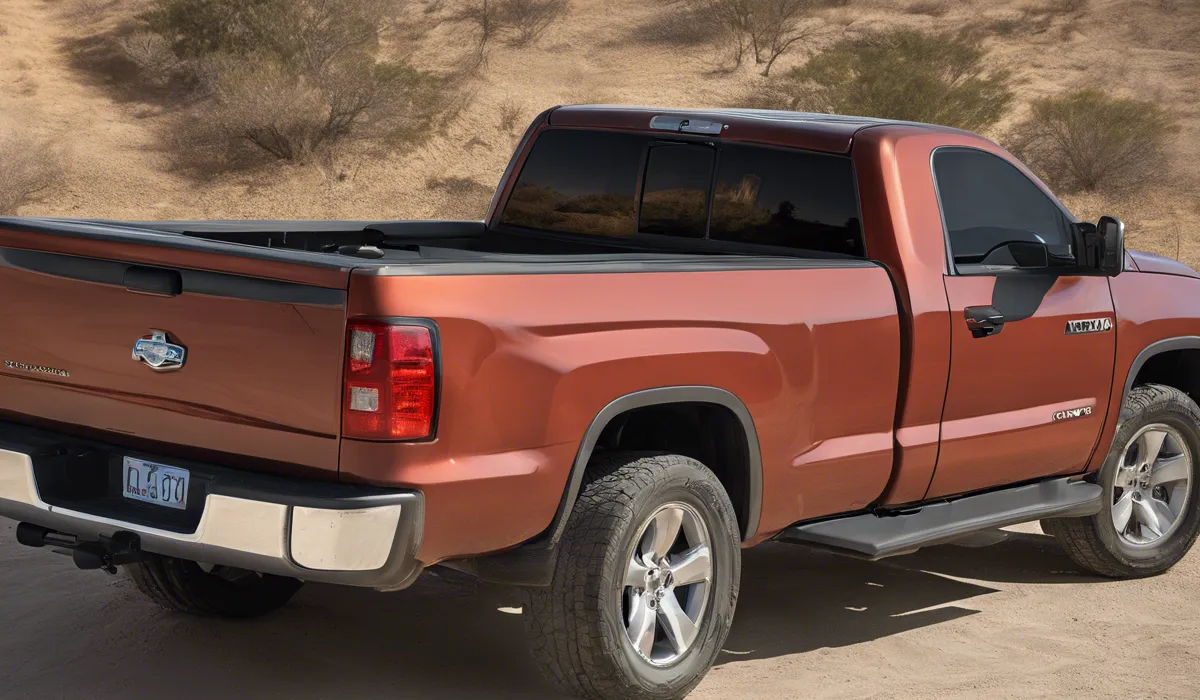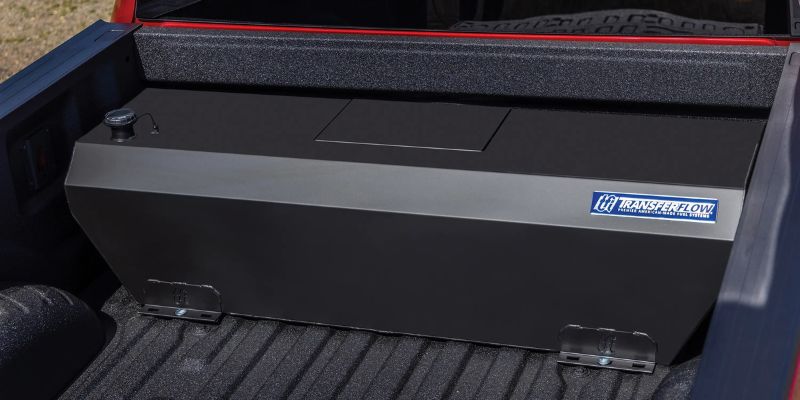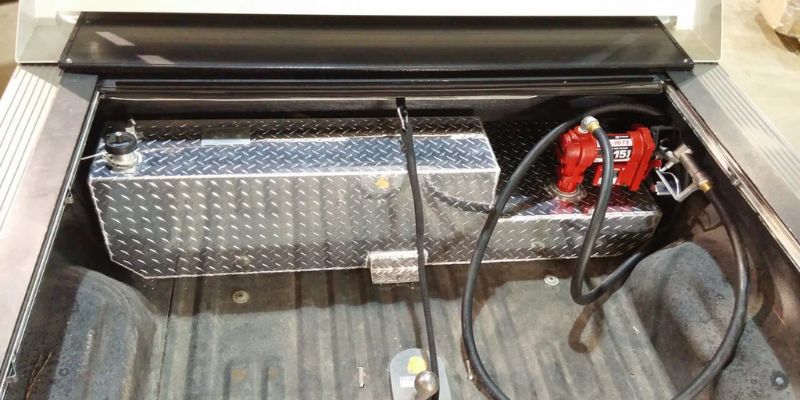Yes, you can have a fuel tank under a tonneau cover if it’s properly secured and complies with local safety regulations. Ensure the tonneau cover is ventilated to prevent fume buildup and check that it doesn’t interfere with fuel tank access.
Legal and Safety Considerations

Understanding Regulations for Fuel Transportation
Transporting fuel requires adherence to strict regulations to ensure safety on the road.
Federal and state laws dictate how fuel can be transported, including the design and installation of additional fuel tanks in a vehicle.
It is crucial to understand these rules to avoid legal complications and ensure safety during travel.
The Department of Transportation (DOT) sets forth guidelines that must be followed meticulously.
Safety First: Carrying Fuel in Your Vehicle
Safety is paramount when carrying fuel. It’s a flammable and potentially hazardous material, so it’s important to take all necessary precautions.
This includes securing the fuel tank properly, ensuring it’s equipped with the right venting system, and regularly checking for leaks or damage.
Taking these steps helps prevent accidents and ensures a safe journey.
Specifics on Fuel Tanks and Tonneau Covers
When it comes to placing a fuel tank under a tonneau cover, there are specific laws that must be observed.
These regulations may vary by state, so it’s essential to check local laws.
In general, the fuel tank should not obstruct your view or vehicle operation, and the tonneau cover must allow for proper ventilation to prevent fume accumulation.
Insurance and Liability Impact
In the event of an accident, having a non-compliant fuel tank could significantly impact your insurance and liability.
Insurance policies may not cover damages or injuries if the additional fuel tank installation does not meet legal requirements.
It’s vital to inform your insurance provider about the modification to ensure coverage remains valid.
Types of Fuel Tanks for Tonneau Cover Integration

Description of Auxiliary Fuel Tanks
Auxiliary fuel tanks specifically designed for tonneau cover integration are a great solution for extended fuel capacity.
These tanks are manufactured to fit neatly under the cover, taking up minimal space while providing extra fuel for long trips.
They come in various sizes and shapes to suit different truck beds and tonneau covers, ensuring a seamless fit.
Materials and Construction: Steel vs. Aluminum
The choice between steel and aluminum for your auxiliary fuel tank is crucial.
Steel tanks are known for their durability and lower cost, but they are heavier and more prone to corrosion.
Aluminum tanks, on the other hand, are lighter and resistant to rust but can be more expensive.
The right choice depends on your budget, needs, and the conditions under which you’ll be using the tank.
Key Features of Tonneau-Compatible Fuel Tanks
When selecting an auxiliary fuel tank, look for features such as proper venting to prevent pressure buildup and fume accumulation.
The size and shape should complement your tonneau cover and truck bed, allowing for easy access while maximizing storage space.
Also, consider the ease of installation and whether the tank includes a transfer pump or gauge for convenience.
Best Practices for Installation
Installing an auxiliary fuel tank under a tonneau cover should be done following manufacturer guidelines and local regulations.
Proper mounting and securing the tank are essential to prevent movement during transit.
It’s also recommended to have a professional perform the installation to ensure it’s done correctly and safely.
Benefits and Drawbacks of Having a Fuel Tank Under a Tonneau Cover

Pros of an Under-Tonneau Fuel Tank
Increased Fuel Capacity
For those planning long trips, an additional fuel tank offers the benefit of increased capacity, reducing the need for frequent stops to refuel.
This can be especially valuable for remote travel where fuel stations are scarce.
Convenience and Accessibility
Having a fuel tank readily accessible under your tonneau cover offers convenience, allowing you to refuel equipment such as generators or other vehicles without detaching the tank or finding a fuel station.
Protection from the Elements and Theft
With the tank securely hidden under the tonneau cover, it is shielded from harsh weather conditions and less visible to potential thieves, providing peace of mind.
Cons of an Under-Tonneau Fuel Tank
Reduction in Truck Bed Space
While convenient, an auxiliary fuel tank can take up valuable space in your truck bed, limiting the room available for other cargo.
Weight Considerations
The additional weight of a full fuel tank can impact your vehicle’s handling and performance, particularly in terms of acceleration and braking.
It’s important to understand how this extra weight affects your truck’s dynamics.
Maintenance and Inspection Needs
Regular maintenance and inspection of the fuel tank are necessary to ensure it remains safe and operational.
Leaks, corrosion, and other issues need to be addressed promptly to prevent hazardous situations.
FAQs About Fuel Tanks Under Tonneau Covers
Can I legally have a fuel tank under my tonneau cover?
Yes, you can legally have a fuel tank under a tonneau cover if it is properly secured and complies with your local safety regulations.
Do I need a ventilated tonneau cover for a fuel tank?
Yes, you should use a ventilated tonneau cover to prevent the buildup of fumes when storing a fuel tank underneath it.
Will a tonneau cover interfere with accessing my fuel tank?
A tonneau cover should not interfere with fuel tank access if it is designed to accommodate the tank or if the tank is positioned to allow for easy access.
How do I properly secure a fuel tank under a tonneau cover?
A fuel tank should be properly secured with straps or mounting hardware to prevent movement and ensure safety under a tonneau cover.
What are the safety considerations for having a fuel tank under a tonneau cover?
Safety considerations include securing the tank properly, ensuring proper ventilation to prevent fume buildup, and compliance with local safety and transportation regulations.
Final Thoughts
Securing a fuel tank under a tonneau cover is permissible, provided it adheres to local safety standards and is properly fastened.
Critical to this setup is ensuring the tonneau cover allows for adequate ventilation to prevent hazardous fume accumulation.
Additionally, it’s vital to maintain unobstructed access to the fuel tank for safety and convenience.
Useful Resources
- https://www.transportation.gov/grants/SS4A
- https://www.ecfr.gov/current/title-46/chapter-I/subchapter-O/part-151
- https://tfsweb.tamu.edu/uploadedFiles/TFSMain/Preparing_for_Wildfires/Fire_Department_Programs/Career_Fire_Department_Programs/Firefighter_Property_Program/TM-9-2320-365-10%20Operators%20Manual%20M1078%20series%202,5%20ton%204×4.pdf
